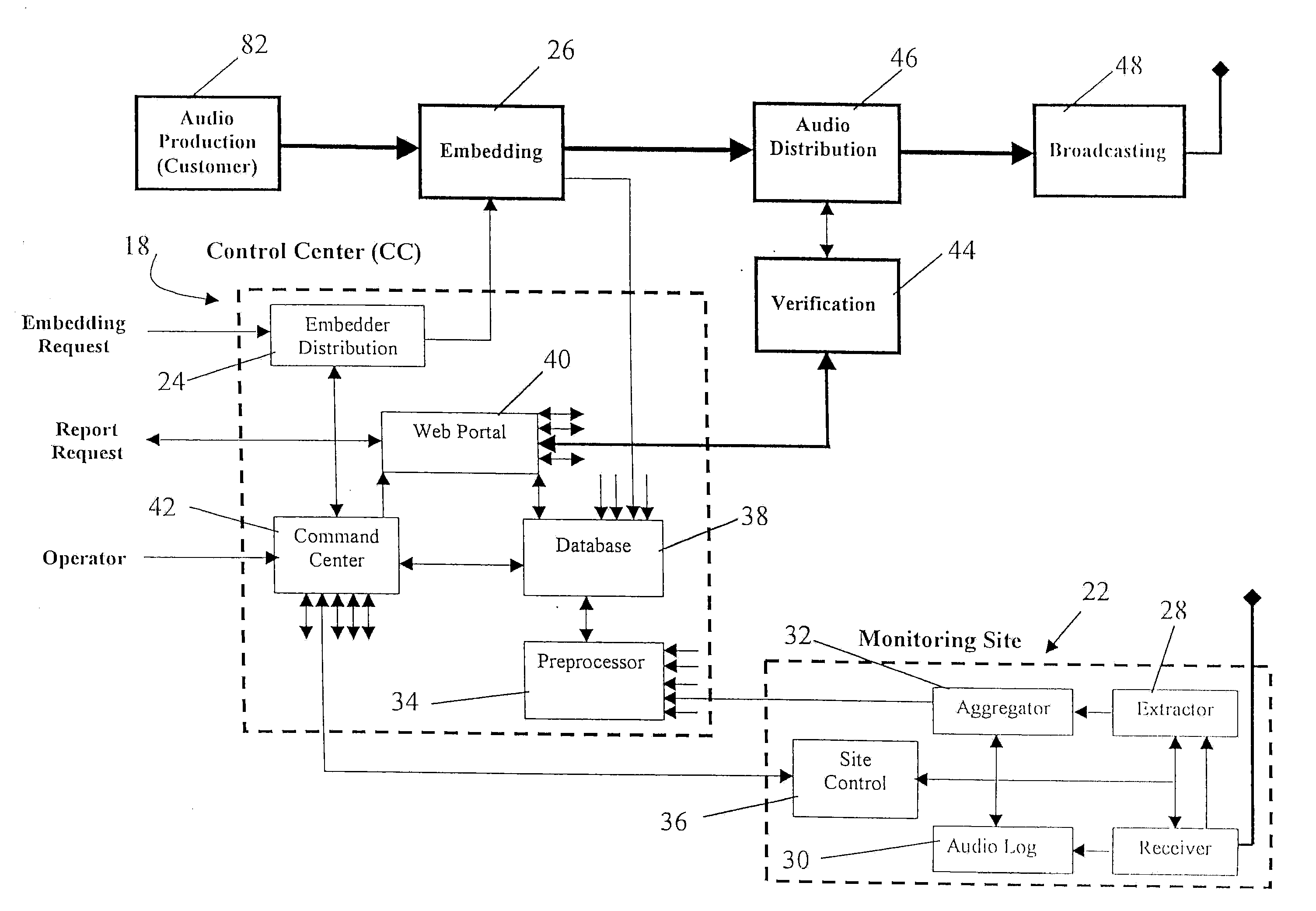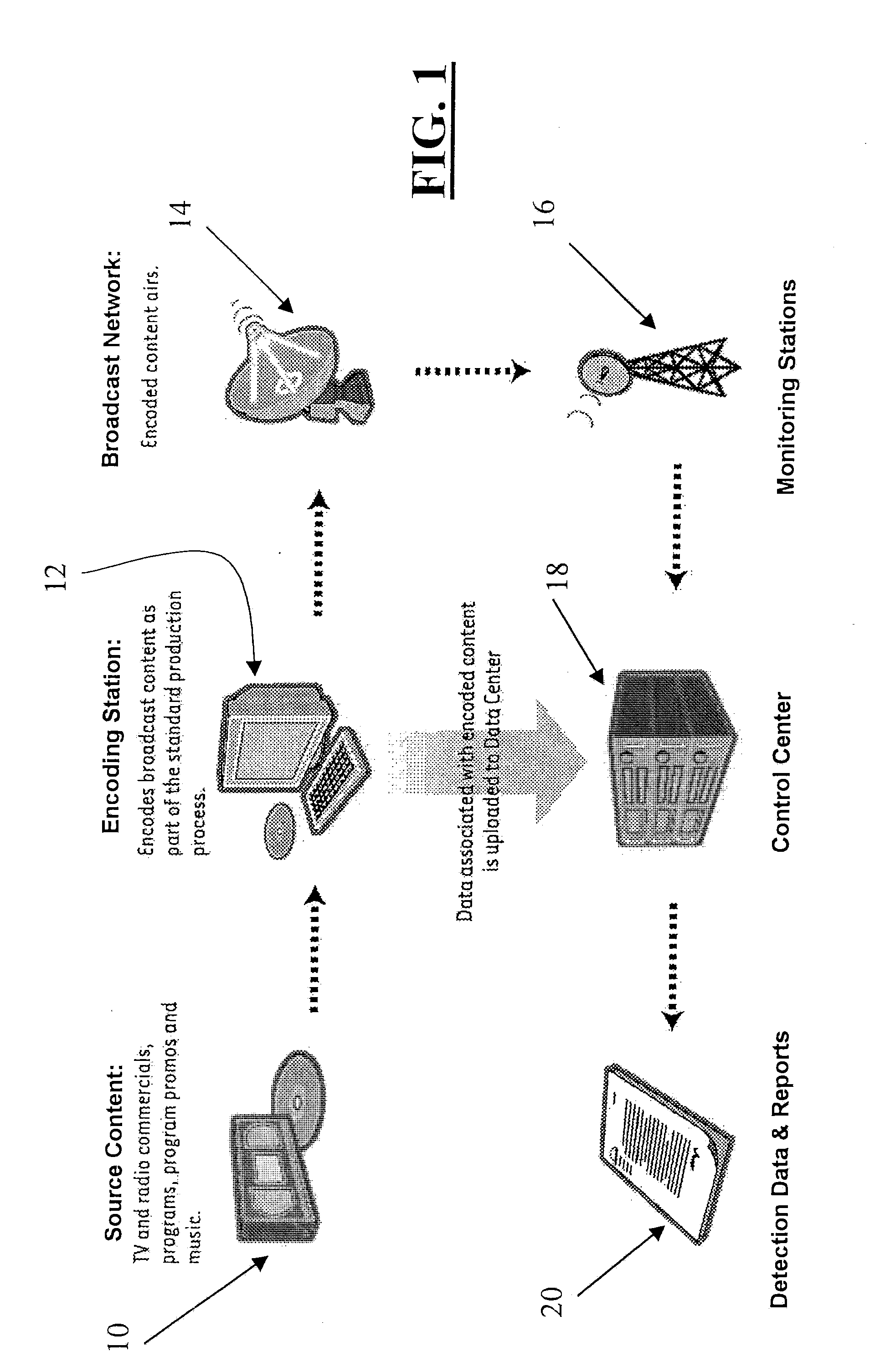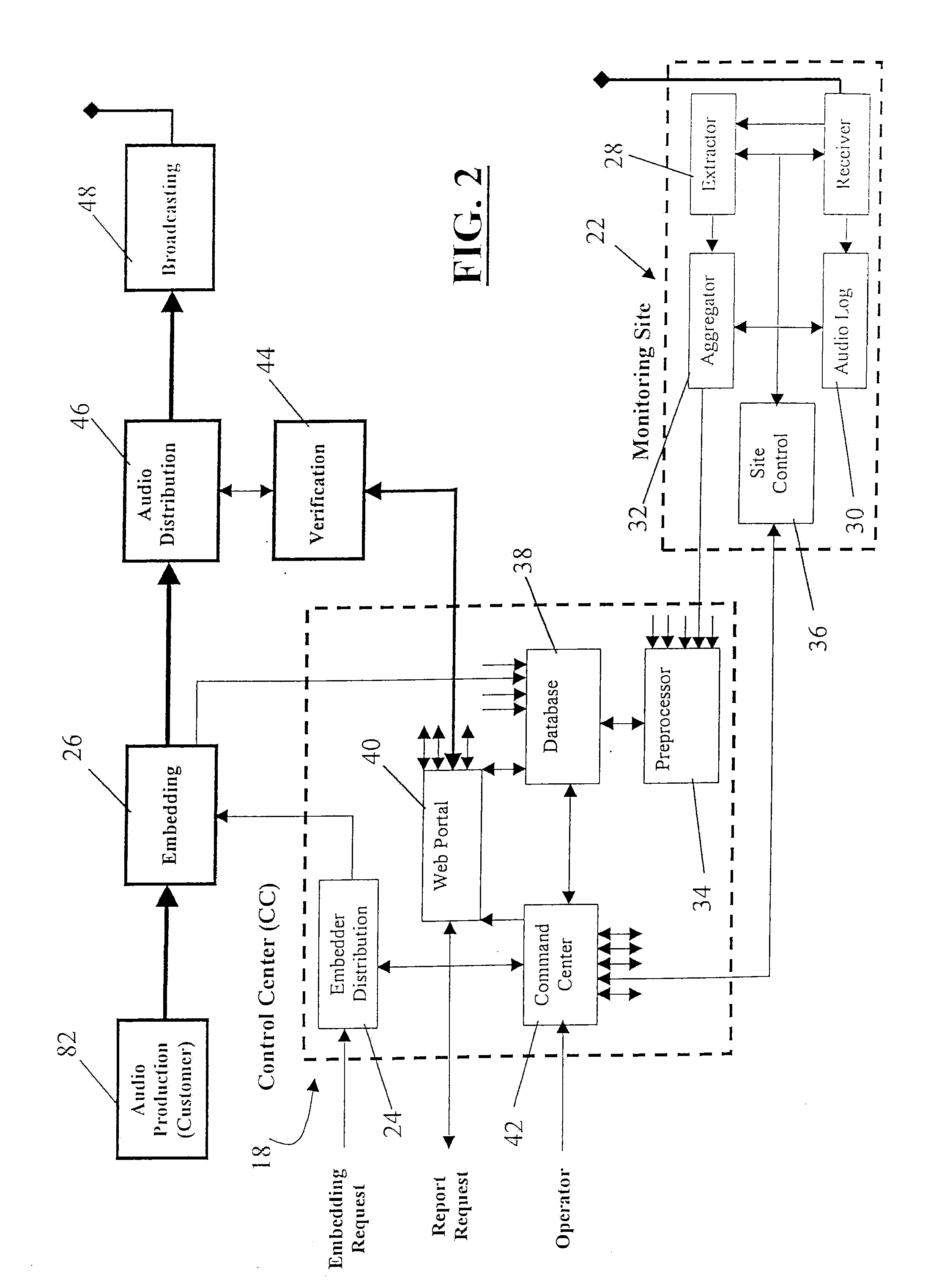Media monitoring, management and information system
a technology of information system and monitoring system, applied in the field of media monitoring, management and information system, can solve the problems of large database of stored fingerprints, requiring complicated search algorithms, and only growing in size and complexity, and achieve the effect of improving monitoring accuracy or effectiveness, and improving monitoring
- Summary
- Abstract
- Description
- Claims
- Application Information
AI Technical Summary
Benefits of technology
Problems solved by technology
Method used
Image
Examples
Embodiment Construction
[0032]FIG. 1 is a high-level diagram of a monitoring system for detecting encoded information carried in a data signal. The source content 10 may comprise, for example, TV and radio commercials, programs, movie and program promos, music which is produced for broadcast, etc. All or parts of such source content 10 may reside on storage devices such as magnetic tapes, hard drives, optical storage or electronic memory devices. Alternatively, the source content 10 may be the soundtrack of a motion picture that is stored on the same medium or separate from the motion picture, e.g., as a digital or analog signal using any of a variety of well-known optical or magnetic techniques. In such cases, means must be provided to extract the associated audio in a computer-readable form for subsequent watermark embedding. It is further possible to directly access the audio signal from the production source without the need for intermediate storage. Such scenarios include direct (acoustical) coupling ...
PUM
 Login to View More
Login to View More Abstract
Description
Claims
Application Information
 Login to View More
Login to View More - R&D
- Intellectual Property
- Life Sciences
- Materials
- Tech Scout
- Unparalleled Data Quality
- Higher Quality Content
- 60% Fewer Hallucinations
Browse by: Latest US Patents, China's latest patents, Technical Efficacy Thesaurus, Application Domain, Technology Topic, Popular Technical Reports.
© 2025 PatSnap. All rights reserved.Legal|Privacy policy|Modern Slavery Act Transparency Statement|Sitemap|About US| Contact US: help@patsnap.com



